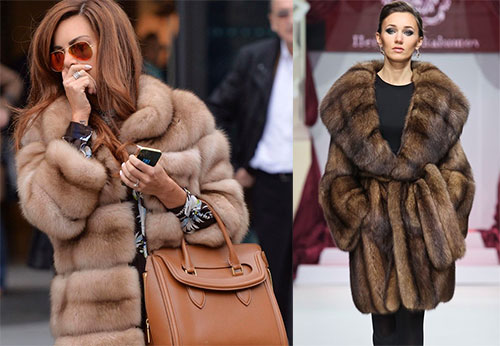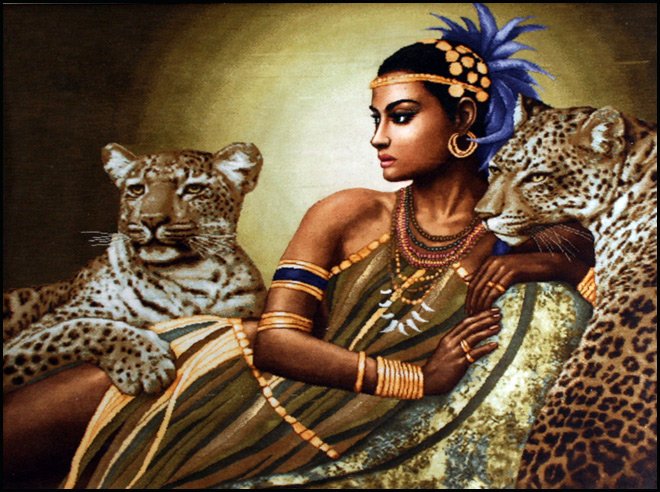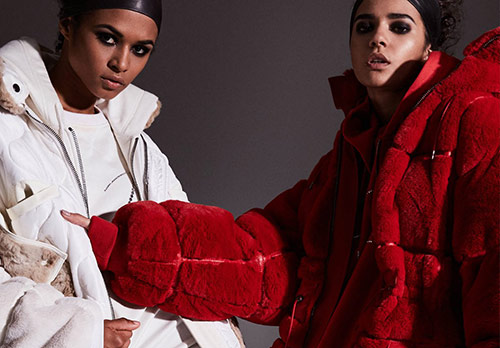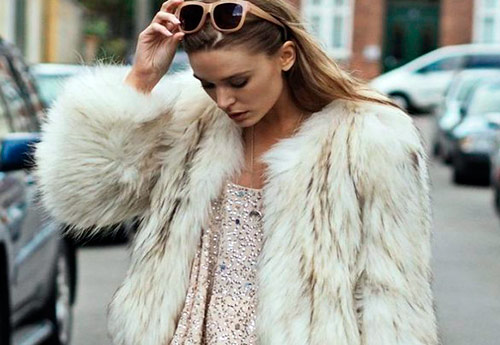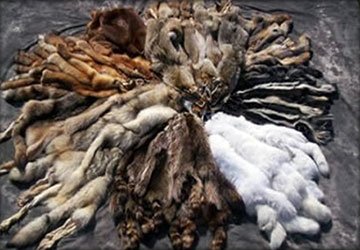Materials Science
Sable fur coats and everything about sable fur in fashion and history
Sable. His fur is a miracle of nature, beauty and luxury, which for centuries has remained a source of pride for Russia. All European rulers wished to receive a sable fur coat as a gift from the Russian tsar, and if not a fur coat, then at least a hat.
“We have traveled all over the world,
Traded in sables
Black and brown foxes;
And now we're out of time
Driving straight east
Past Buyan Island,
To the kingdom of the glorious Saltan ... "
Traded in sables
Black and brown foxes;
And now we're out of time
Driving straight east
Past Buyan Island,
To the kingdom of the glorious Saltan ... "
The history of the sable trade and the properties of fur
Sable fur is considered one of the most valuable. It is the fur of Russian sables that is valued at international fur auctions. For a long time in Russia they loved this beautiful, fluffy and warm fur. There was a time when in world markets sable skins were paid on a par with gold.
Sable fur products have always been the best tsarist gift. Foreign royal persons and guests of honor were awarded with products made from this unique fur. From a collar made of sable fur to a long-fur coat - everything was considered the height of prosperity and success, a sign of high status in society.
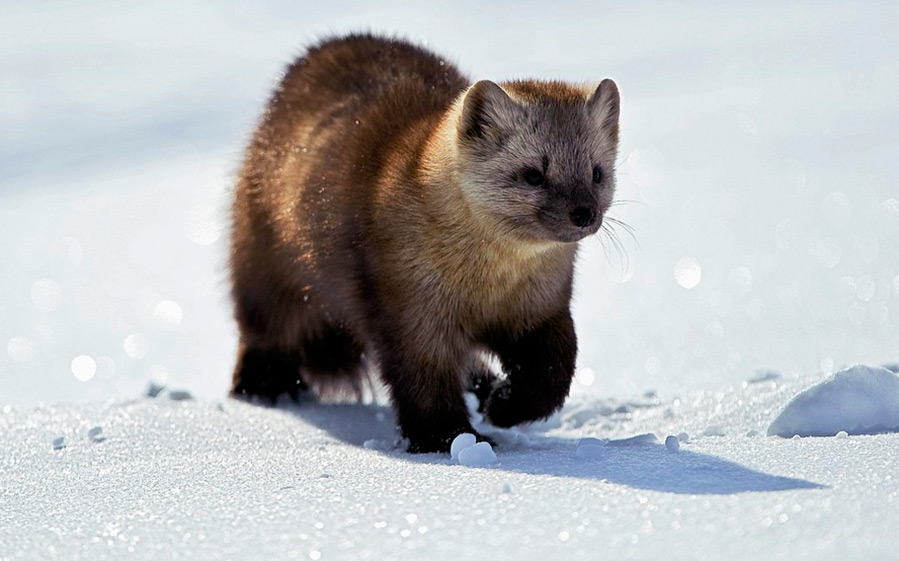
Sable fur served as an instrument of diplomacy - it was presented to foreign ambassadors, with its help they made peace.
Sable fur among furs has always had a high value. It is so beautiful that today, with exorbitant prices for everything you need to pay for, it remains a favorite of fashion. Of course, not everyone can pay, but everyone can admire its beauty.
According to its properties, sable fur remains in the top ten of the best fur furs... If we take the wear resistance as 100% (Kamchatka beaver or otter), then sable fur has 80%, higher than that of mink, and its heat-shielding properties are at the highest level.
Fur wear resistance - 14 seasons.
Sable is the national pride and treasure of Russia. Sable livestock are trying to get in many countries, but so far there is no better sable than in Russia. The farm animal most often turns out to be larger, you do not need to spend energy on the struggle for life. But the beauty of the wild sable remains unsurpassed.
The color of the farm sable cannot even be compared with the wild one. The so-called "gray sable" is found only in nature.
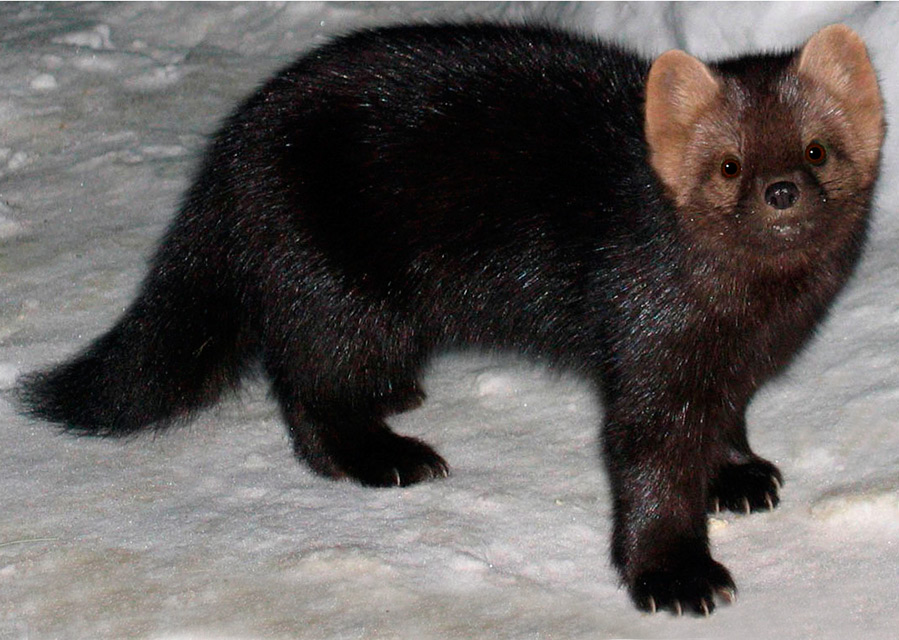
To sew a sable fur coat, you need to have 100 - 120 skins... The size of the skins in length - from 15 to 56 cm in width - from 12 to 30 cm. Yes, and it is not easy to choose according to the shades and height of the hair.
Sable skins are used unpainted, in their natural form. But if you really choose by color, then you get a luxurious fur coat, in which you cannot see where one skin goes into another. Fluffy fur shimmers in the rays of light, shines, and a touch to it causes pleasant sensations. Every woman is beautiful in such a fur coat.
The most valuable is the Barguzin sable. Its fur is soft, dark with a little gray at the tips of the hairs.
Sable fur has always had a high value and was not available to most. Indeed, for one sable fur coat at the beginning of the twentieth century, one could buy a decent house. At present, sable fur at its cost also remains inaccessible to the majority.
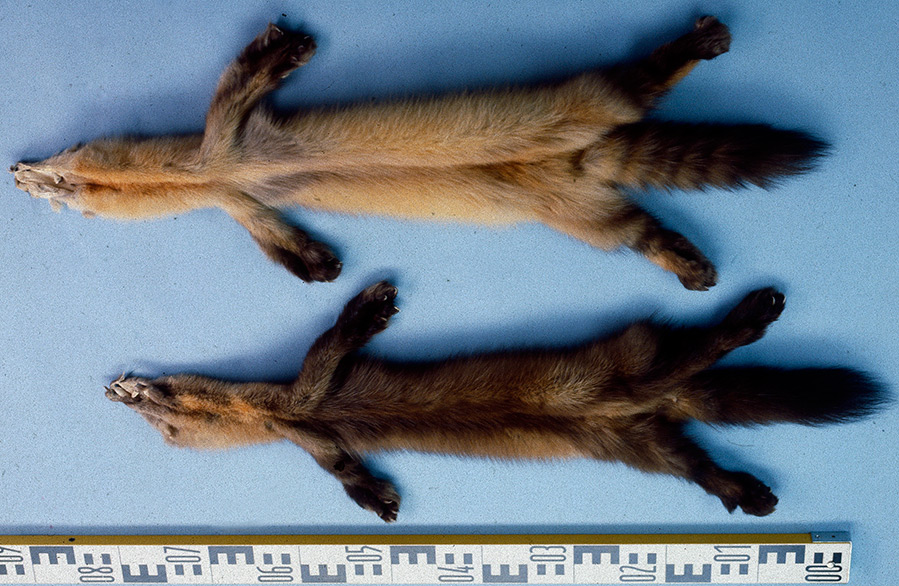
Sable ridges
Sable skins are subdivided into ridges depending on the geographic location of extraction and the characteristics of the hairline: Barguzin, Yakut, Kamchatka, Sakhalin, Amur, Yenisei, Tobolsk, Tuvinian, Minusinsk, Altai.
On the world market, fur of Barguzin, Yakut, Kamchatka, Yenisei and Amur is more common. The rest of the furs are procured in small quantities. The skins of the same ridge differ in the thickness, color and silkiness of the hairline.
It is impossible for a non-professional in furrier business to determine the ridges of uncharacteristic skins.
The coloration of sables can be from light sandy or fawn to dark brown, almost black. In the Siberian taiga, there is another rare species of sable - the white sable, but this is really a rarity.
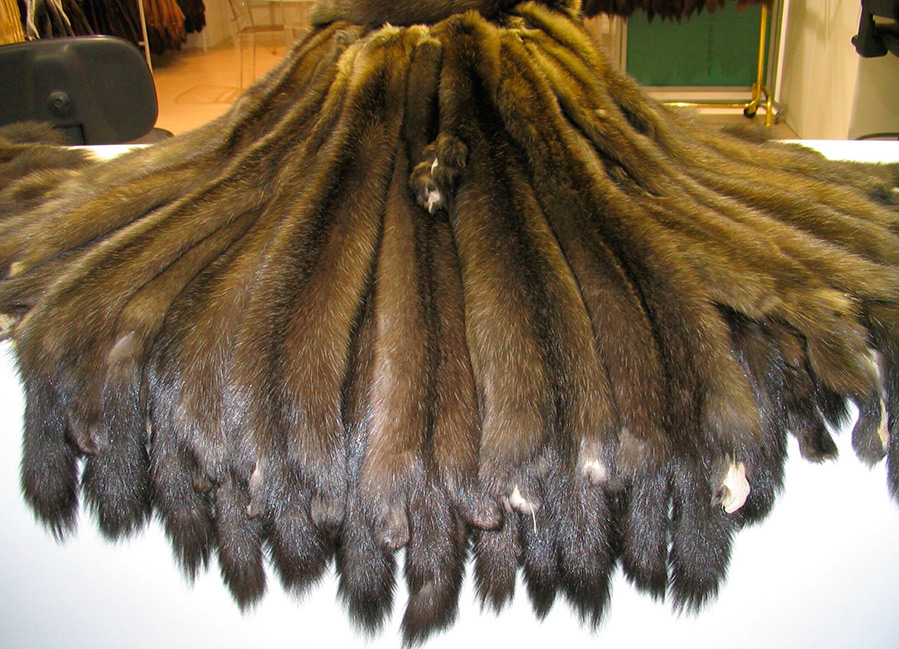
Sable fur price
The price for sable fur has a big difference between the upper and lower limits, about 30-40 times, and sometimes it goes beyond the upper limit. The cost of raw materials depends on the quality of the fur - on the density, silkiness, shine, defects.
If we consider skins without a defect, then the difference in the cost of the same ridge, depending on the quality, can be 5-10 times.
As already mentioned, the most valuable is the Barguzin sable. Its fur is fluffy, thick and silky. The largest is the Kamchatka sable, in its coloration there is more "gray hair", but the hair itself is coarse.
This feature is found in all fur-bearing animals - the larger the individual, the harder the hair. But among the Kamchatka and Yenisei sables, there are also such individuals whose color cannot be distinguished from the Barguzin sable. Therefore, as we can see, most of us will not be able to determine what the real ridge is. Most likely, only real hunting hunters can do this.
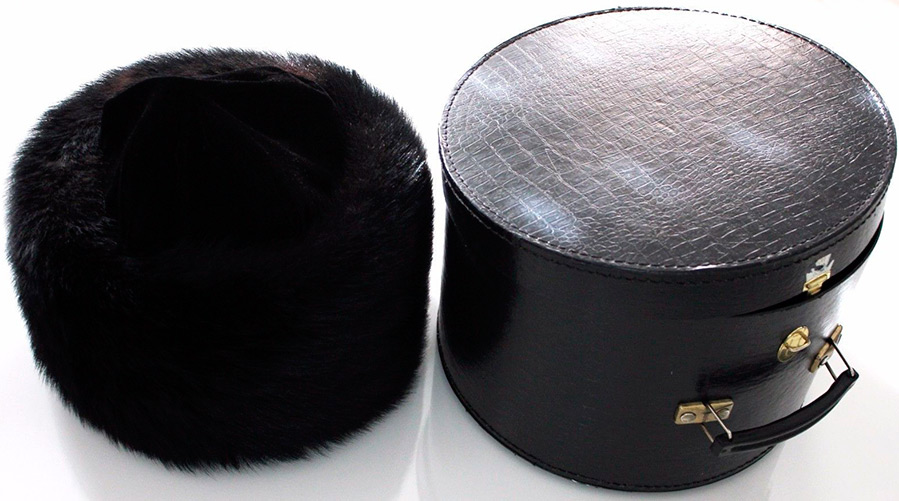
The cost of the skin depends on the color - the darker or bluer the skin, the higher the cost, the lighter the color, or the more reddish it has, the lower the price.
Some of the darkest in color are the Yakut ridges, but at the same time these are the smallest skins, and therefore their hair is delicate and short. Such skins are very much appreciated in the sewing of jackets. Most of the Yenisei sables are found as the lightest, with a bright throat spot.
Very often, dark skins darken even more, and lighter skins lighten. Silver sable or “gray” is prized, the more silver, the higher the price. These sables are found in the Minusinsk and Kamchatka ridges.
What else determines the cost of sable skins? From the number of similar skins in the selection. It turns out that the more similar skins there are in the selection, the higher the cost of the entire selection, and therefore, of each skin. The highest prices, one might say, are astronomical, for the dark Barguzin sable with gray hair.
Based on all this, all elite skins go only to the auction, where they are selected from them. Sometimes it takes several years to pick up. If you decide to buy an elite sable, you need to be patient, get ready for the fact that goods of this class will have to be monitored, ordered, negotiated, and repeatedly come to the place of receipt of new batches. In this case, you will have to forget about bargaining.
Does the size of the skin matter in its value? Has, but in the presence of the previous factors. Indeed, with an increase in the size of the skin, the fur becomes coarse, and the silkiness decreases. The lowest cost Sakhalin ridges, their skins and small, and with low coarse hair.
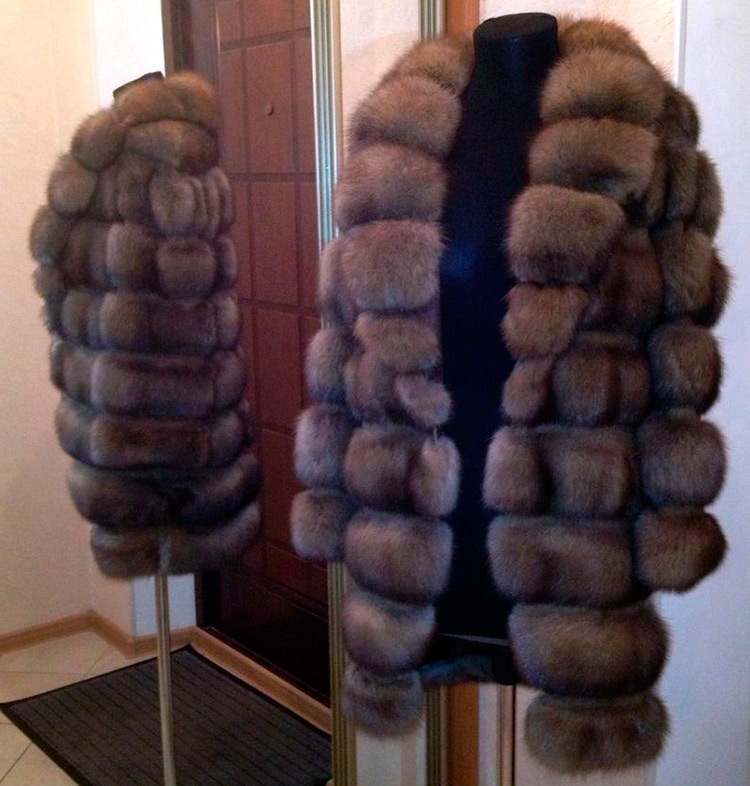
Sable fur dyeing
Coloring and toning of fur is rarely used, most often they try to preserve their natural beauty. If this is done, it is for the sake of preserving color transitions. Sometimes discoloration is performed, but initially only the lightest skins are selected for it. In the process of bleaching, again, they try not to affect the guard hair, while maintaining naturalness, and only lighten the matte gray underfur.
When toning fur, they achieve the best selection of skins in the product. Sometimes more valuable dark tones are obtained. The best tinting of sable can only be done with high-tech dressing.
By the way, when you can see in the product how well the toning is done, this will be one of the signs of the high level of the product. But it happens that toning is deliberately not done to make it look natural. However, most often it is performed.
Modern Italian and French fur products are made with the most perfect toning, in which you can get the desired dark color of the Barguzin sable, while maintaining the silkiness, softness and gray hairs in the fur. Artificially gray hair has not yet been obtained.
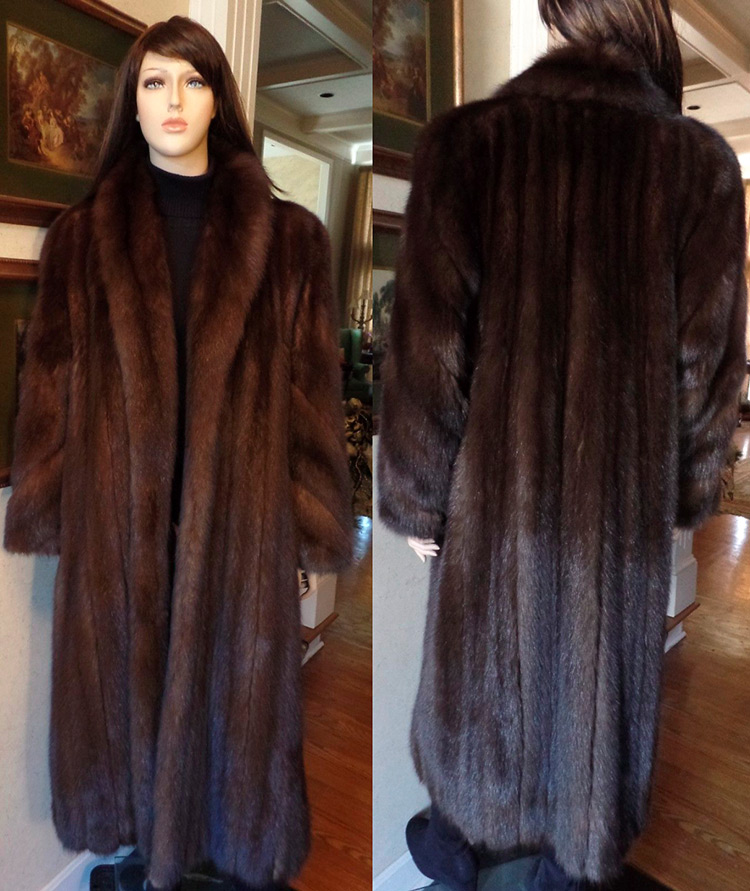
Sable Fashion Trends
What products are now being sewn from sable? Of course, these are hats and fur coats, but with an increased interest in jackets, jackets and vests, these products are also sewn from sable fur in modern fashion. In addition, sheepskin coats, hats, dresses, suits and accessories - bags, ties, gloves, etc. are trimmed with sable fur.
The way a sable coat looked before, now you will not find this one. Classic "dressing gowns" with an English collar and trapeze no longer satisfy the demands of fashionistas. When sewing fashionable products, new trends are often used - short sleeves, transverse orientation of skins, etc.
In the lateral orientation, a striped effect is obtained, which can be enhanced by inserting suede stripes between the rows. In addition, it is easier to choose skins for a transverse arrangement than otherwise, since the skins are different.
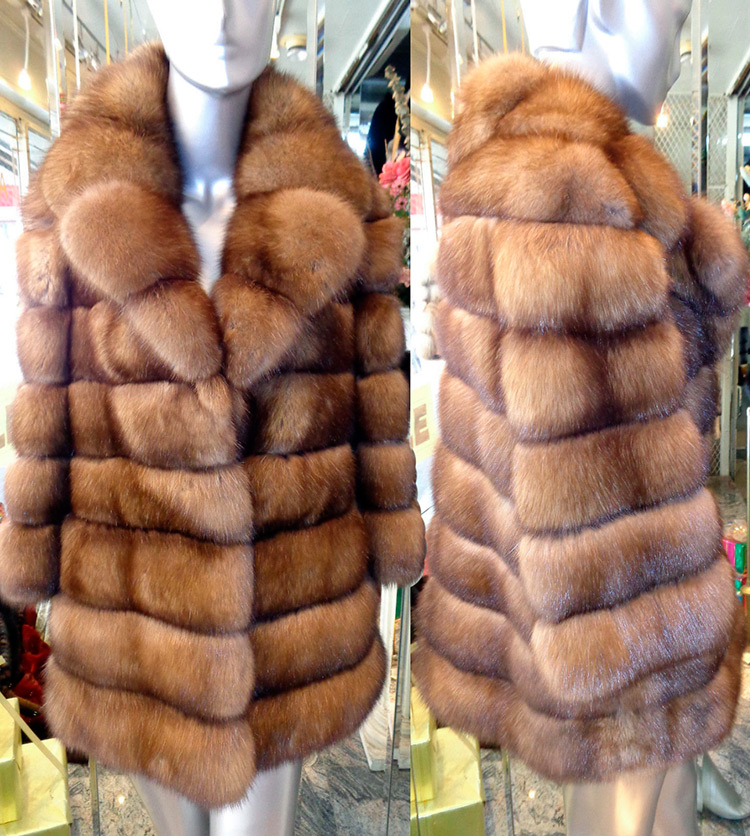
Sewing and design of fur products
There is another aspect that undoubtedly increases the price. This is the sewing level. Since the skins are all different, you should choose not only a sable, but also an "elite" furrier. It is impossible to find two completely identical skins, it is necessary to select approximately the same, select by color, by shades, taking into account the density, height of the fur, the color of the underfur.
If differences in the height of the fur are visible in the product, then the whole thing will look, as it were, disheveled, shaggy. This can also be the case when the whole skin is used with all the differently pubescent areas. In expensive products, when sewing, only the back is used no further than the cross.
An "elite" furrier will select the skins so that there will be no visible transitions outwardly, and this is a very high class of work. And the cost of such work is also high. Originality in design certainly matters. Sometimes, in addition to sable skins, other materials are used.
When the skins are arranged in stripes, they are separated by thin suede in the color of the underfur, this visually distinguishes the stripes of skins and correctly orientates the folds. With the transverse arrangement of the skins, the joining strips are most often wider - up to 70 mm. Then they also have a decorative function.
When using an additional possible version of the material as a jointing, it must be borne in mind that all materials have different qualities and properties in terms of their characteristics and wear resistance. In a product of high quality and materials for joining must be of a high level.
The materials used for decoration are braid, lace, leather, etc. Be that as it may, all the same, the materials are different, and therefore the wear resistance will be determined by the materials with the lowest parameters.
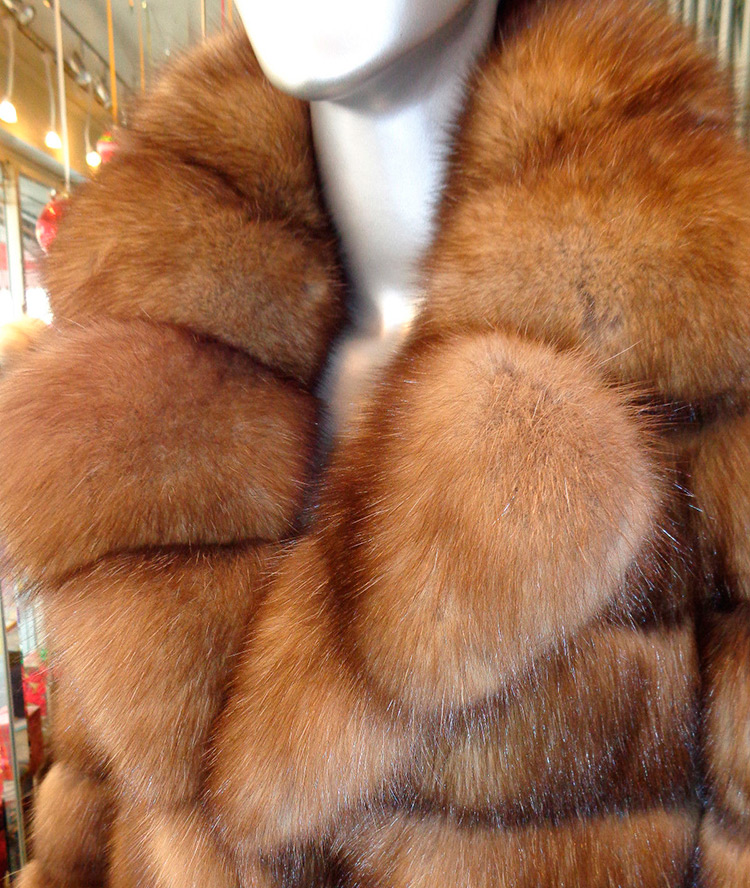
How to choose a sable product
You can buy sable fur at large enterprises that sell and dress skins, in online stores, in markets, in stores from a well-known brand.
Fur sable is best bought with a fur specialist. As it became known that sable is a very valuable and beautiful fur, many people think that the cheapest sable fur product is better than an expensive mink product, since even the cheapest sable remains more expensive than mink.
This is where our vanity is played. For many women, the aspect of well-being is important. But many of us are strongly susceptible to this passion, which makes us buy something more expensive than anyone else.
The purchase should start with trips to the most expensive salons. See what prices are, what the most expensive things look like, feel, feel the magical silkiness and softness of fur, consider the shine and play of sable skins. Professionals in fur say that when you see a Barguzin sable, you will never be led astray on low varieties.
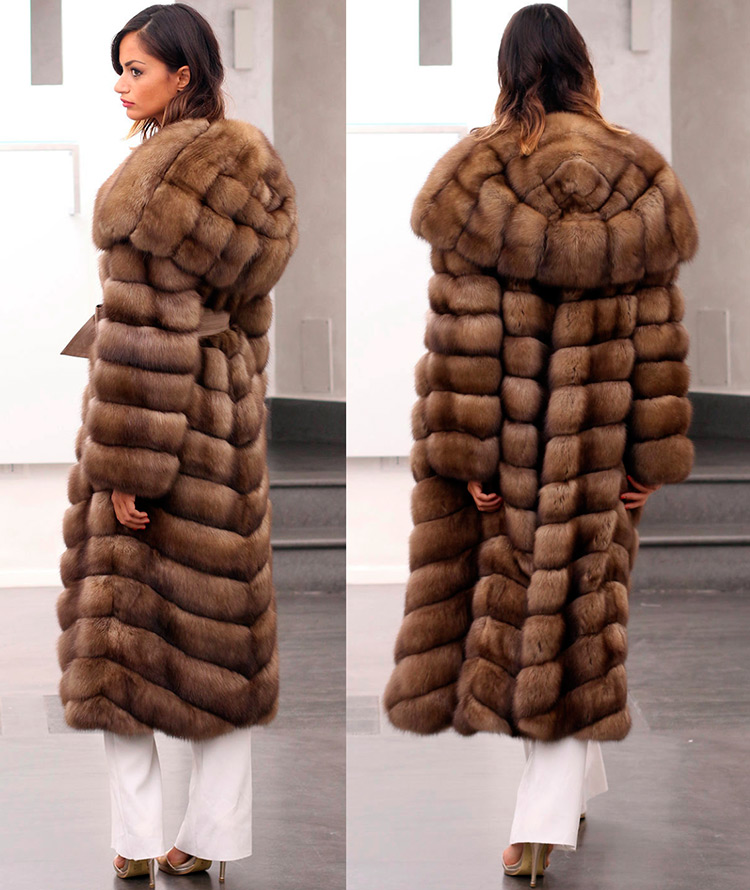
In fur markets, many products are often presented from dyed marten, which resembles sable, but the variety of this fur is significantly inferior to sable, and therefore it is better to go with a specialist for such a purchase, so as not to purchase dyed marten or sable of a lower grade instead of Barguzin sable.
Marten fur is not bad at all, but in comparison with sable, of course, it loses.And in places where both animals live, their differences are minimal. Be that as it may, sable fur is thicker, softer and more silky.
In sable fur, as in other fur, there is another important aspect - if the skins are supplied in separate small batches, then different dressings and different ages of skins are possible, and the quality of the product depends on this. After all, improper manufacturing, especially handicraft, threatens the quality and aging process of the product.
When making artisanal dressing of any skin, not only sable, the flesh is usually poorly sanded, as a result of which a certain animal smell will come from the skin. Grinding the flesh eliminates residual fat. If this operation is not performed well enough, the smell is present, and the residual fat will lead to a loss of strength of the flesh and, accordingly, the skin and the product as a whole.
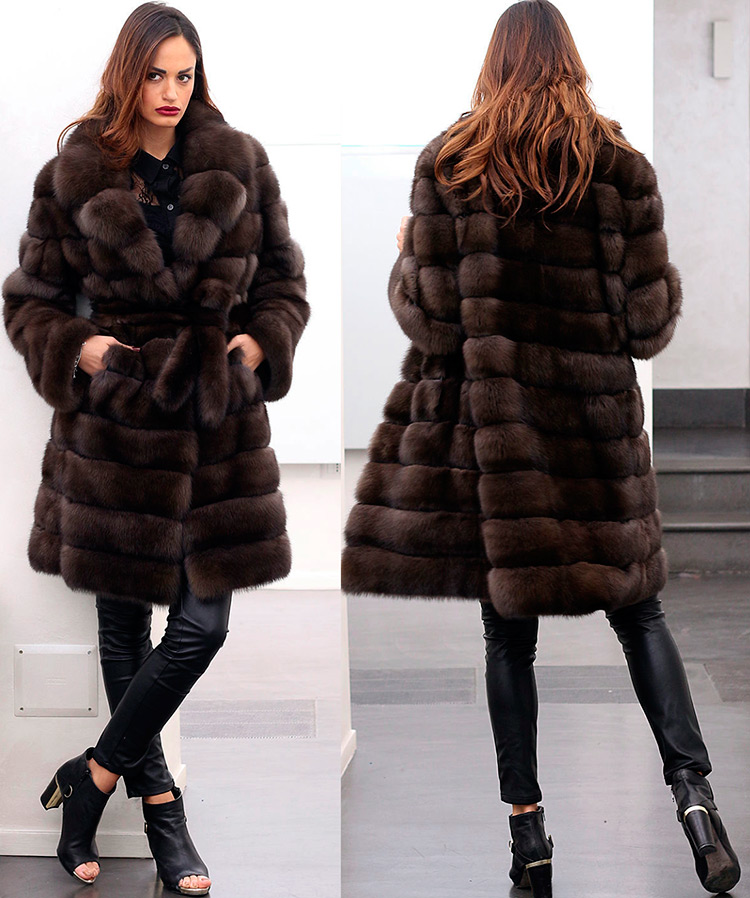
Our Siberia runs along the border with China, and therefore the Chinese directly buy skins from hunters and sew products from them. Skinning does not meet industrial technological standards, and products of this kind are not durable and short-lived.
Sable hunting is not easy for hunters, to put it mildly, besides, in difficult economic periods there is a significant deterioration of any product. Everyone is in a hurry to earn a lot and more, more ..., but the quality decreases.
When buying a used product, you need to know that fur is fur, but the strength of the flesh also decreases with age. Therefore, buying a used product is a dubious undertaking.
It is better to buy sable products from well-known brands, since it is impossible to find high-quality sable from manufacturers of affordable goods or from our Asian friends. A high-level product is obtained from raw materials of the same level, and only well-known brands can afford to buy sable skins at a high price.
Therefore, the level of the brand when buying is of no small importance.
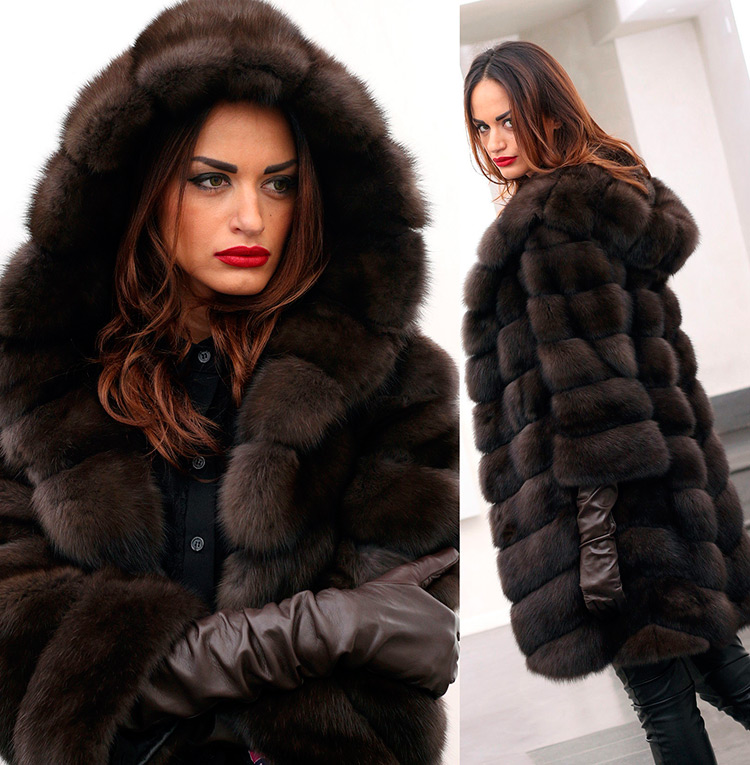
Caring for a sable fur coat
Dry cleaning and dry cleaning only. Although this is also not so easy. Specialists in fur products warn that sable can endure such execution 2 - 3 times. It is better to wear such a thing carefully so that dry cleaning is not needed, then the unique fur will serve you for at least 14 seasons.
Comments and Reviews
Add a comment
Rating news
Shades of clothing that make women look younger
What shades of hair make women younger: rules and photos
Funny wedding dresses - photos and ideas
12 most expensive down jackets for the winter
How to look 25 at 40: tips from supermodels
Beautiful schoolgirls
Anti-aging haircuts and hairstyles for women
Fashionable skirts for autumn and winter
Fashionable women's trousers for the cold season
Fashionable and stylish sandals for summer 2024
Spring-summer 2024
 Fashionable dresses and tops with thin spaghetti straps
Fashionable dresses and tops with thin spaghetti straps
 Bandana tops: how to wear stylishly and beautifully
Bandana tops: how to wear stylishly and beautifully
 How to put together the perfect men's wardrobe for the summer
How to put together the perfect men's wardrobe for the summer
 Fashionable shorts for spring-summer 2024
Fashionable shorts for spring-summer 2024
 Fashionable skirts for spring-summer 2024: a guide to online shopping
Fashionable skirts for spring-summer 2024: a guide to online shopping
 The most fashionable dresses spring-summer 2024: styles and colors
The most fashionable dresses spring-summer 2024: styles and colors
 Fashionable total look 2024: ideas of images and trends
Fashionable total look 2024: ideas of images and trends
